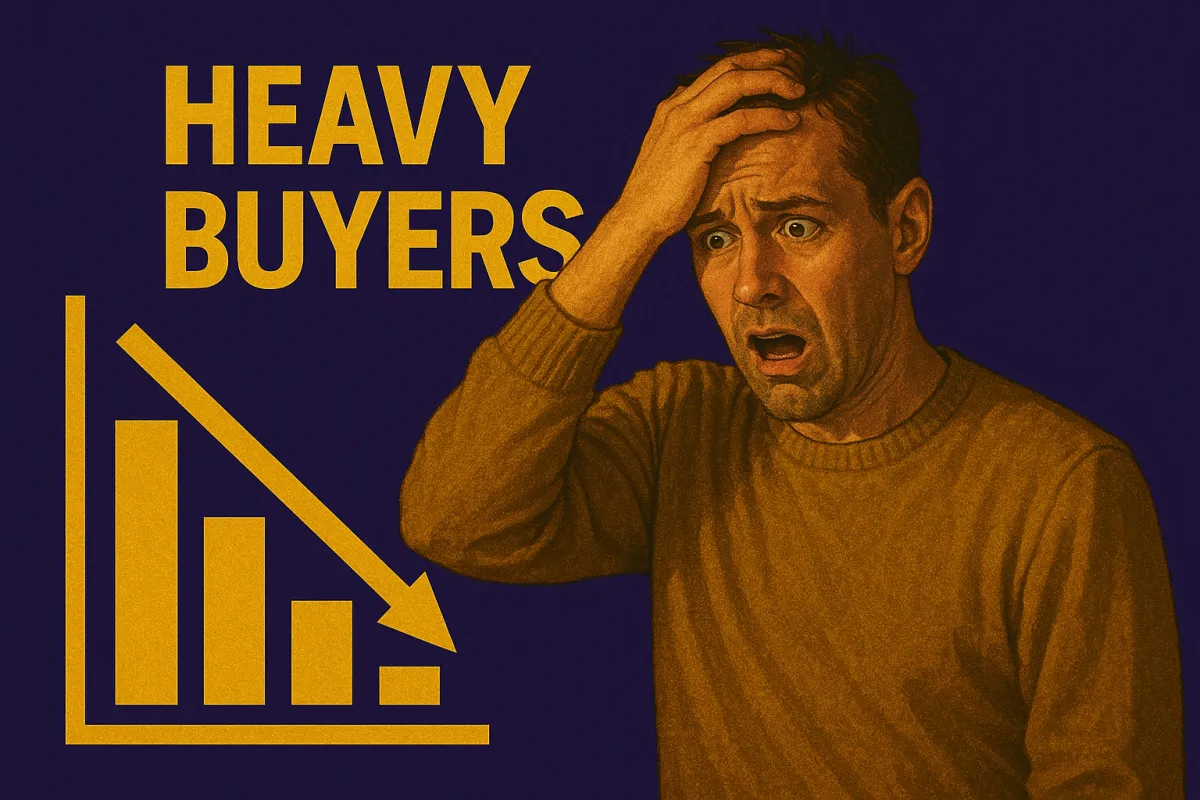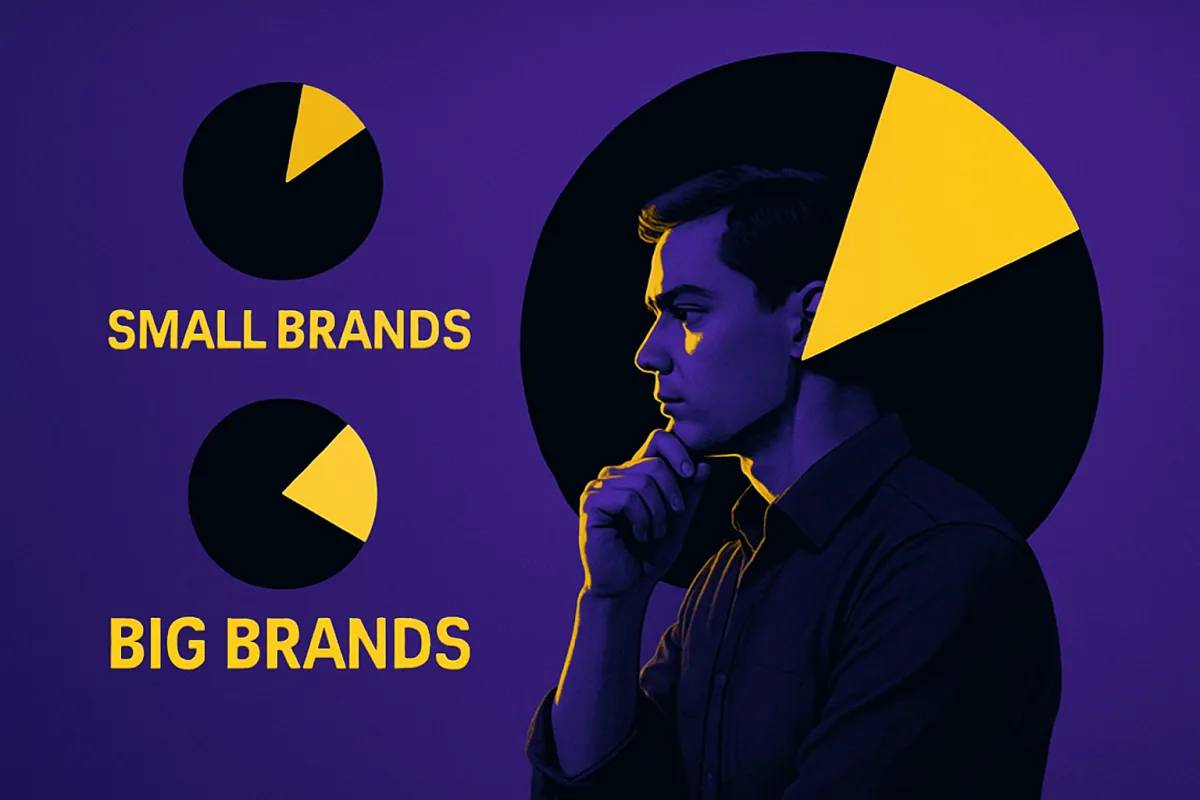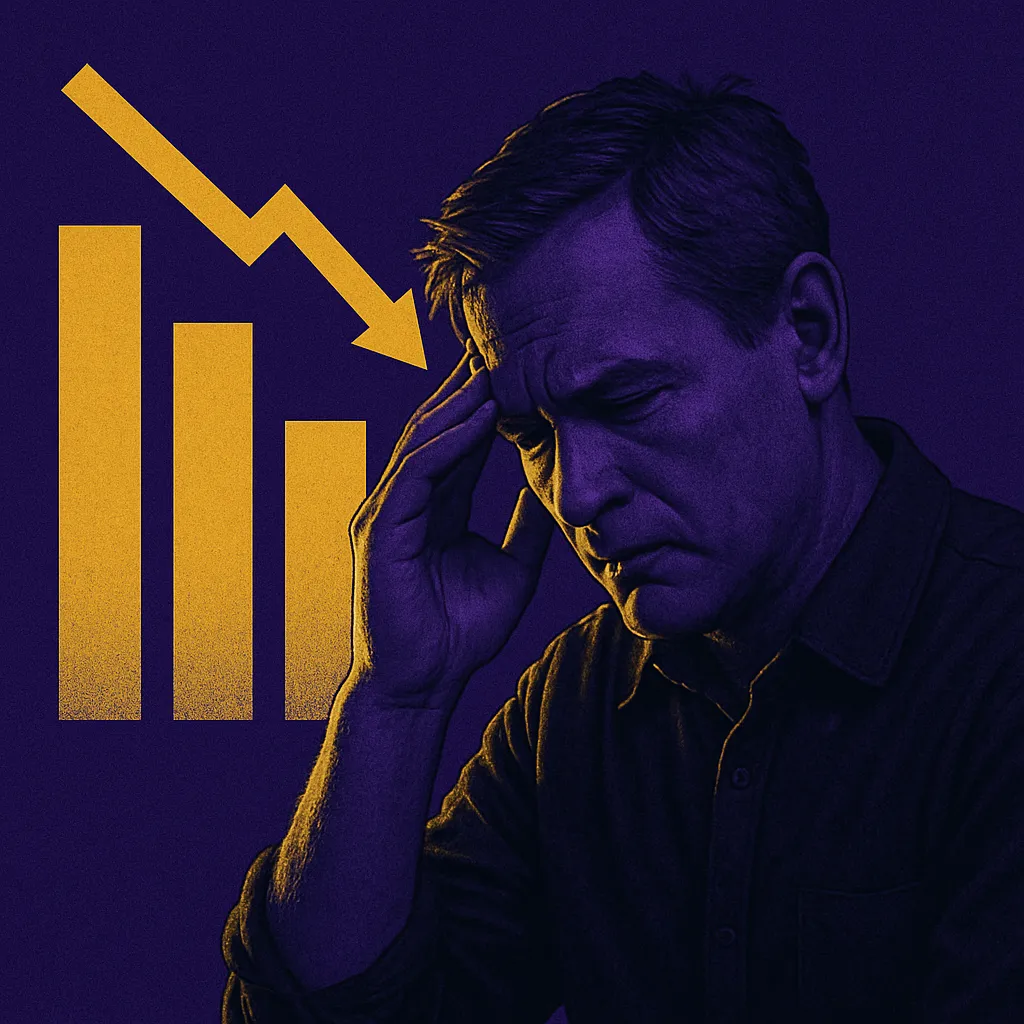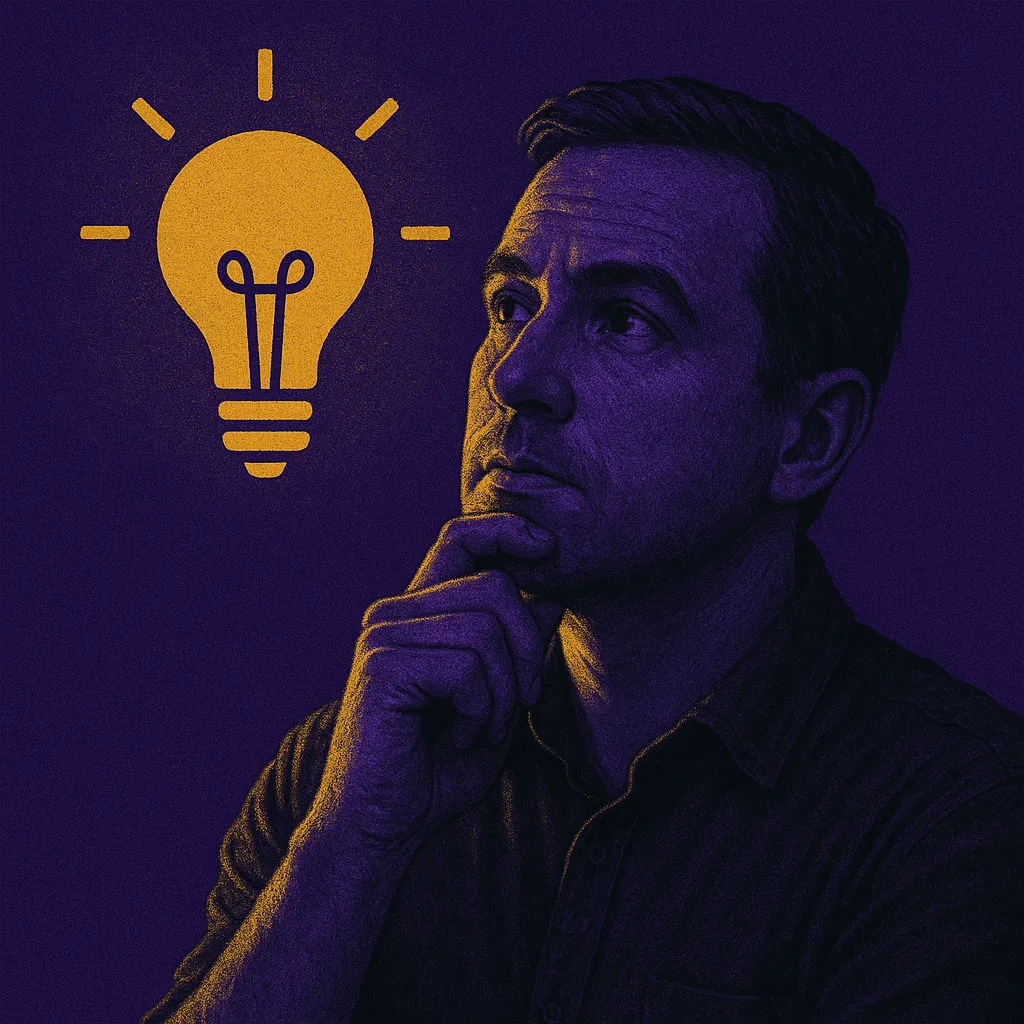By German Tirado, July 31, 2025
Table of Contents
Introduction
The Heavy Buyer Fallacy
What the Data Actually Shows
Double Jeopardy Law: Why Bigger Brands Win Twice
Light Buyers: Hidden Growth Engines
What You Risk by Focusing Only on Heavy Buyers
The 95-5 Rule and Mental Availability
Practical Marketing Actions
Conclusion
Frequently Asked Questions
Works Cited
1. Introduction

In the world of marketing, there's a persistent belief that dominates strategy discussions and budget allocations: "Focus on your best customers." Whether it's called VIP marketing, loyalty maximization, or high-value targeting, the logic sounds compelling:
"Let’s invest our marketing dollars on heavy buyers, they generate the most revenue, so they offer the best return on investment (ROI)."
This idea, though widely accepted, is fundamentally flawed.
The truth, supported by decades of marketing science and data, is this: light buyers are essential for sustainable brand growth. Brands grow by increasing penetration, acquiring more category buyers, not by intensifying the buying behavior of a loyal few. This has been empirically proven across industries, from fast-moving consumer goods to enterprise B2B services [HBG1], [HBG2], [How B2B Brands Grow.pdf].
Light buyers, often overlooked, represent a massive yet underutilized opportunity. They may purchase infrequently, but collectively they account for the bulk of customer volume, and often a significant portion of revenue. More importantly, they are the engine behind future growth. Without attracting and retaining more light buyers, brands stagnate.
This article will expose the fallacy of over-targeting heavy buyers, show the scientific laws that explain how brands truly grow, and provide actionable marketing strategies that prioritize customer acquisition, mental availability, and broad reach. Whether you're managing a global consumer brand or running marketing for a niche B2B service, these principles will help you grow your brand the smart, scalable way.
2. The Heavy Buyer Fallacy

Heavy buyers do account for a large chunk of current revenue, which is why many marketers get lured into building strategies around them. Common beliefs include:
"It’s cheaper to retain than to acquire."
"The top 20% of customers generate 80% of revenue."
"We should maximize CLV by upselling existing customers."
These may feel intuitively right. But they fall apart under scientific scrutiny.
Key Problems:
Heavy buyers are already buying a lot, growth potential is small.
They’re not very loyal, most buy other brands too [HBG1].
Acquiring more buyers improves loyalty metrics, not the other way around.
Focusing on heavy buyers might help retention metrics look good in the short term, but it stalls penetration growth, and that’s what limits scale.
3. What the Data Actually Shows

The Ehrenberg-Bass Institute has studied thousands of brands across hundreds of categories. The overwhelming finding?
Brands grow by increasing market penetration—by acquiring more customers [HBG1], [HBG2].
This includes light and non-buyers, not just your current fans.
Empirical Patterns:
Most customers are light buyers who purchase infrequently.
Brands with higher penetration have higher loyalty because they have more buyers [Scientific Laws of Marketing.srt.txt].
The growth path is wide, not deep.
In short: growth comes from more buyers, not more loyalty.
4. Double Jeopardy Law: Why Bigger Brands Win Twice

The Double Jeopardy Law is one of marketing science's most robust discoveries. It shows that:
Small brands have fewer customers
And those customers are less loyal
Conversely, big brands enjoy more customers who also buy a bit more often. But they got that way by growing their customer base, not by trying to deepen engagement [HBG1], [Scientific Laws of Marketing.srt.txt].
So if you want your brand to enjoy higher loyalty, first make it bigger by attracting more buyers, especially the light ones.
5. Light Buyers: Hidden Growth Engines

Light buyers often:
Buy once or twice a year (or less)
Appear in large numbers
Represent the bulk of a brand's customer base
Why They Matter:
Half of your sales can come from buyers who purchase once annually
They account for the majority of reach potential
They are the reason your brand can scale [HBG2]
Light buyers are often forgotten because they aren’t vocal, visible, or profitable individually. But collectively, they are the bedrock of growth.
6. What You Risk by Focusing Only on Heavy Buyers

Targeting only heavy buyers limits your:
Penetration growth
Mental availability in broader markets
Long-term ROI (you’re spending to convert people already loyal)
You also increase the risk of:
Audience burnout (ad fatigue among frequent buyers)
Missed sales from new or returning category entrants
Overestimating brand loyalty (a common bias in brand tracking)
Summary:
Over-focusing on heavy buyers shrinks your brand's future.
7. The 95-5 Rule and Mental Availability

John Dawes popularized the 95-5 Rule:
At any given time, only ~5% of category buyers are in-market [95-5.pdf].
This means most of your ads will reach out-of-market buyers. So what should you do?
Build mental availability: memory structures that link your brand to Category Entry Points (CEPs).
When these buyers enter the market in 6, 12, or 18 months, they'll recall your brand.
Advertising isn’t about "right message, right time." It’s about being mentally available before the buying moment. That’s how you win future sales.
8. Practical Marketing Actions

Here’s how to shift from heavy-buyer obsession to penetration-driven strategy:
1. Buy Broad Reach Media
Use cost-effective channels (e.g. YouTube, Meta Reach campaigns) to expose your brand to light/non-buyers.
2. Advertise Year-Round
Light buyers are in-market at unpredictable times. Always be advertising to catch them.
3. Build Mental Availability Across CEPs
Rotate messaging across different situations: “When I’m in a rush”, “While budgeting”, “With my team” [CEP-B2B.pdf].
4. Measure Penetration and Mental Availability
Track mental market share and brand salience across entry points, not just loyalty metrics.
5. Refresh Distinctive Assets
Make sure your logo, colors, tagline, and brand cues are memorable and consistent [BDA].
9. Conclusion: Growth Comes from Broadening Your Customer Base, Not Doubling Down on Heavy Buyers
The evidence is unequivocal: targeting only your heavy buyers is a poor growth strategy. While they may account for a large portion of sales in the short term, they make up only a small percentage of total category buyers. Most people who buy from your brand do so infrequently, and that’s perfectly normal. In fact, light buyers are the lifeblood of brand growth, not a peripheral segment to ignore.
This is true across both B2C and B2B industries. The Double Jeopardy Law shows that brands with more market share have more customers and slightly higher loyalty, not because they “target loyalty,” but because they have more buyers [The Double Jeopardy Law in B2B]. In contrast, smaller brands suffer a double loss: fewer customers who are also less loyal. This makes it clear that customer acquisition is the primary driver of long-term ROI [HBG1].
Moreover, because 95% of category buyers are not in-market at any given time, advertising that builds Mental Availability, the memory structures that make your brand easy to think of and easy to buy, is critical [95-5]. When it’s time to choose, these light or lapsed buyers are more likely to buy from brands they remember and recognize. That’s why Mental Availability campaigns aimed at light buyers offer outsized impact on market penetration and, therefore, growth.
Heavy buyer retargeting may deliver short-term efficiencies on paper, but it doesn’t scale. It’s marketing for loyalty, not for growth. The real return on investment comes from reaching more category buyers, especially those who are currently light or non-buyers. This is especially important in B2B markets, where decision-makers are often overlooked due to over-personalized, hyper-targeted messaging that fails to build brand salience [How B2B Brands Grow].
To sustainably grow your brand, whether you're selling insurance, forklifts, toothpaste, or SaaS, you need to:
Invest in broad-reach media.
Build and refresh memory structures across multiple Category Entry Points.
Increase the salience of your distinctive brand assets.
Make your brand easier to buy through better physical availability.
In short, don’t chase loyalty. Chase reach. Because light buyers, by their sheer volume, hold the key to unlocking long-term market share, revenue growth, and brand health.
10. Frequently Asked Questions (FAQs)
Q: Don’t heavy buyers offer better ROI?
A: Not really. They generate short-term revenue but offer limited growth potential. ROI improves with more buyers reached.
Q: Should I still do retention marketing?
A: Yes, but it should be secondary. The priority is acquiring more customers and staying salient.
Q: How do I find light buyers?
A: You don’t need to find them. Reach everyone in the category. Light buyers will be part of that audience.
Q: Is this true for B2B too?
A: Yes. B2B markets follow the same patterns: growth comes from wide reach, not deep targeting [How B2B Brands Grow.pdf].
Q: Why can’t I just target people who are in-market now?
A: Because 95% of category buyers are out-of-market at any given time. Effective advertising builds mental availability before buyers are in-market, so your brand is remembered when they do need to buy [95-5.pdf].
Q: Isn’t it wasteful to advertise to people who aren’t buying now?
A: No. It’s essential for growth. Those out-of-market buyers become in-market later. If your brand is in their memory, you dramatically increase purchase likelihood.
Q: How do I measure mental availability?
A: Track how well your brand is linked to Category Entry Points (CEPs). The broader and fresher your memory networks, the stronger your mental availability [Category Entry Points in a B2B World.pdf].
Q: Should I personalize ads to segments?
A: Only if it doesn’t limit reach. Personalization rarely beats consistent brand messaging across the entire category. Broad-reach advertising wins in the long run.
Works cited
[HBG1] Sharp, Byron. How Brands Grow: What Marketers Don’t Know. Oxford University Press, 2010.
[HBG2] Romaniuk, Jenni, and Byron Sharp. How Brands Grow Part 2: Emerging Markets, Services, Durables, New and Luxury Brands. Oxford University Press, 2015.
[BDA] Romaniuk, Jenni. Building Distinctive Brand Assets: A Practical Guide to Brand Growth. Oxford University Press, 2016.
[95-5.pdf] Dawes, John. Advertising Effectiveness and the 95-5 Rule: Most B2B Buyers Are Not in the Market Right Now. LinkedIn B2B Institute & Ehrenberg-Bass Institute, 2020.
[How B2B Brands Grow.pdf] Romaniuk, Jenni, and Byron Sharp. How B2B Brands Grow. Ehrenberg-Bass Institute for Marketing Science, 2022.
[How B2B Brands Compete.pdf] Romaniuk, Jenni, and Byron Sharp. How Business-to-Business (B2B) Brands Compete. Ehrenberg-Bass Institute for Marketing Science, 2023.
[The Double Jeopardy Law in B2B.pdf] Romaniuk, Jenni. The Double Jeopardy Law in B2B Shows the Way to Grow. Ehrenberg-Bass Institute for Marketing Science, 2021.
[Category Entry Points in a B2B World.pdf] Romaniuk, Jenni. Category Entry Points in a Business-to-Business (B2B) World. Ehrenberg-Bass Institute for Marketing Science, 2022.
[Scientific Laws of Marketing.srt.txt] Sharp, Byron. “Scientific Laws of Marketing.” Interview, 2022. Transcript file.
Address
Phone: 725-240-6870
Email : [email protected]
Address : 6440 Sky Pointe Dr. #140-341 Las Vegas, NV 89131
Artificial Intelligence
Marketing & Branding
Marketing & Branding
©2025 Max Digital Edge | All Rights Reserved
